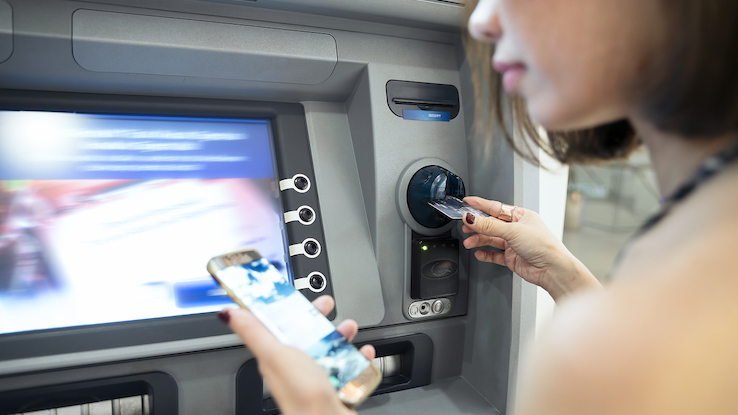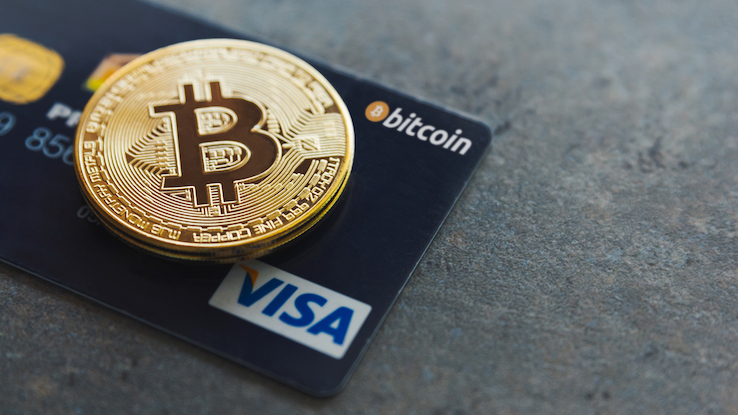
It’s no secret that interest in cryptocurrency investing has been on the rise, with approximately 16% of American adults saying they’ve used, invested in or traded crypto, according to a late-2021 survey from the Pew Research Center. Additionally, in November 2021, the total value of all cryptocurrency assets crossed the $3 trillion mark, showing that, in addition to its potential for growth, cryptocurrency itself is becoming more viable.
Now that more people are getting involved in this emerging digital medium and its values are trending higher, a rush to create various crypto-backed and crypto-based financial products has been underway. Crypto credit cards represent one growing element of this new equation.
A relatively new arrival on the finance scene, crypto credit cards and crypto debit cards are becoming increasingly common with surprising speed. If you’re wondering what these cards are and how they work, here’s what you need to know.
What Are Crypto Credit Cards?
It’s important to understand that there are two different kinds of crypto cards. First, you have crypto-backed credit and debit cards. With these card types, digital currency is an underlying asset, allowing you to make purchases using the value of the crypto you personally hold.
Second, there are traditional credit and debit cards offering cryptocurrency as part of their rewards programs. With these types of cards, the main underlying asset is usually a fiat currency, such as the U.S. dollar, that’s exchanged for goods and services. As you make purchases with these cards, you can receive crypto rewards in exchange for engaging in certain activities, the same way you earn rewards like airline miles with other credit cards.
How Do Crypto Credit Cards Work?

When it comes to how crypto credit and debit cards work, it depends on the type of card involved. Crypto-backed credit cards typically allow you to finance purchases based on the value of the cryptocurrency you own. They’re essentially a modified approach to a secured credit card; they just don’t require a fiat currency deposit as collateral because they use cryptocurrency instead.
With crypto-backed debit cards, you can spend your cryptocurrency like regular fiat currency. Each time you swipe the card to make a purchase, enough crypto is removed from your associated crypto wallet to cover the cost of the item based on the cryptocurrency’s current value.
Traditional credit and debit cards that provide cryptocurrency as part of their rewards programs function just like any other bank- or credit union-provided debit or credit card. Those accounts are based on fiat currency, and that’s what’s exchanged during purchase transactions you make with these cards.
The way crypto-based rewards are offered depends on the financial institution that services the card. Some may offer a set percentage of purchases back as cryptocurrency. This effectively works like traditional cashback programs, though the “cash” in this case is an amount of cryptocurrency of an equivalent value. Depending on the program, you may receive the crypto you’ve earned this way on a set schedule, such as monthly or quarterly.
Other cards may issue points you can exchange for various rewards — and offer cryptocurrency as one of those rewards. Usually, earning crypto with this option isn’t automatic. Instead, it’s a decision, and you have to initiate the process.
Finally, there are some cryptocurrency credit and debit cards that actually fall into both categories. Along with being crypto-backed, they also provide cryptocurrency as rewards.
How Do Crypto Credit Cards Compare to Traditional Cards?
Generally speaking, cryptocurrency credit cards and debit cards work a lot like their traditional counterparts. You can make purchases at a wide variety of retail locations and on websites using your associated card number.
When the card transaction is processed, it uses the same infrastructure as traditional Visa or Mastercard cards. As a result, cryptocurrency debit and credit cards are potentially usable almost anywhere, just like the conventional versions. In fact, even when you use them in person, most cashiers or stores won’t know, from a transaction standpoint, that you swiped a crypto-backed card.
Often, the only difference is whether the account is based on a fiat currency, making the transactions more straightforward, or a digital asset. With the latter, a portion of your crypto is either sold or allocated to cover the purchase based on the coin’s prevailing value at the time of your transaction.
The Benefits and Drawbacks of Crypto Credit Cards

The main benefits of crypto credit and debit cards vary depending on the card type involved. Crypto-backed credit cards let you use the value of your existing digital assets to make everyday purchases. Crypto-backed debit cards let you spend currency from your crypto wallet like it was fiat currency in your bank account.
Crypto rewards credit cards and debit cards provide opportunities for you to secure digital assets via your everyday purchases without the need to invest in crypto separately. Everyday purchases can lead to more crypto in your associated wallet or account. This makes investing fully or nearly automatic, depending on whether the card program requires you to exchange points or not.
One of the main drawbacks of crypto-backed credit cards is the impact of volatility, which refers to the tendency for cryptocurrencies to experience unpredictable swings in value. Volatility alters the value of an underlying asset. If it declines drastically, the credit card lender may require you to make a larger digital asset deposit or may reduce the limit on your card.
Additionally, cryptocurrency-backed credit cards carry all of the risks associated with traditional cards. You’ll be charged interest and will need to make monthly payments. The financial decisions you make in using the card could also impact your credit score or report. Plus, a lender may have the ability to cash out your digital assets if you make specific missteps, though that depends on the arrangements in your card contract.
When it comes to crypto-backed debit cards, the primary drawback relates to volatility. Because the amount of cryptocurrency that’s removed from your account for a transaction depends on its value at the time, you may end up spending far more in digital assets than you’d expect if its value shifts overnight. Additionally, if you use the card during a decline in price and then the value of the currency shoots back up, you could lose a significant amount of earning potential by spending it.
If you’re using a traditional credit or debit card that offers digital assets as rewards, it’s important to be aware of the risks associated with that payment method. Otherwise, the main drawback is that the value of your rewards may fluctuate, making them less valuable in some cases. Additionally, the rewards become taxable if you ever sell them in cryptocurrency form.
Using Crypto Credit Cards Responsibly
Using crypto-backed credit cards responsibly involves the same best practices you use with traditional cards. Making timely payments is essential. Missing payments can trigger penalties, the nature of which depends on what’s in your cardholder agreement.
If you want to avoid interest and keep your underlying digital assets safe, it can be helpful to pay off your card balance in full every month. That eliminates some of the financial risk — aside from the potential volatility. Along with ensuring the lender won’t have a reason to cash out your crypto, you won’t spend any extra money when financing a purchase. That allows you to benefit from the arrangement while avoiding a primary drawback.





